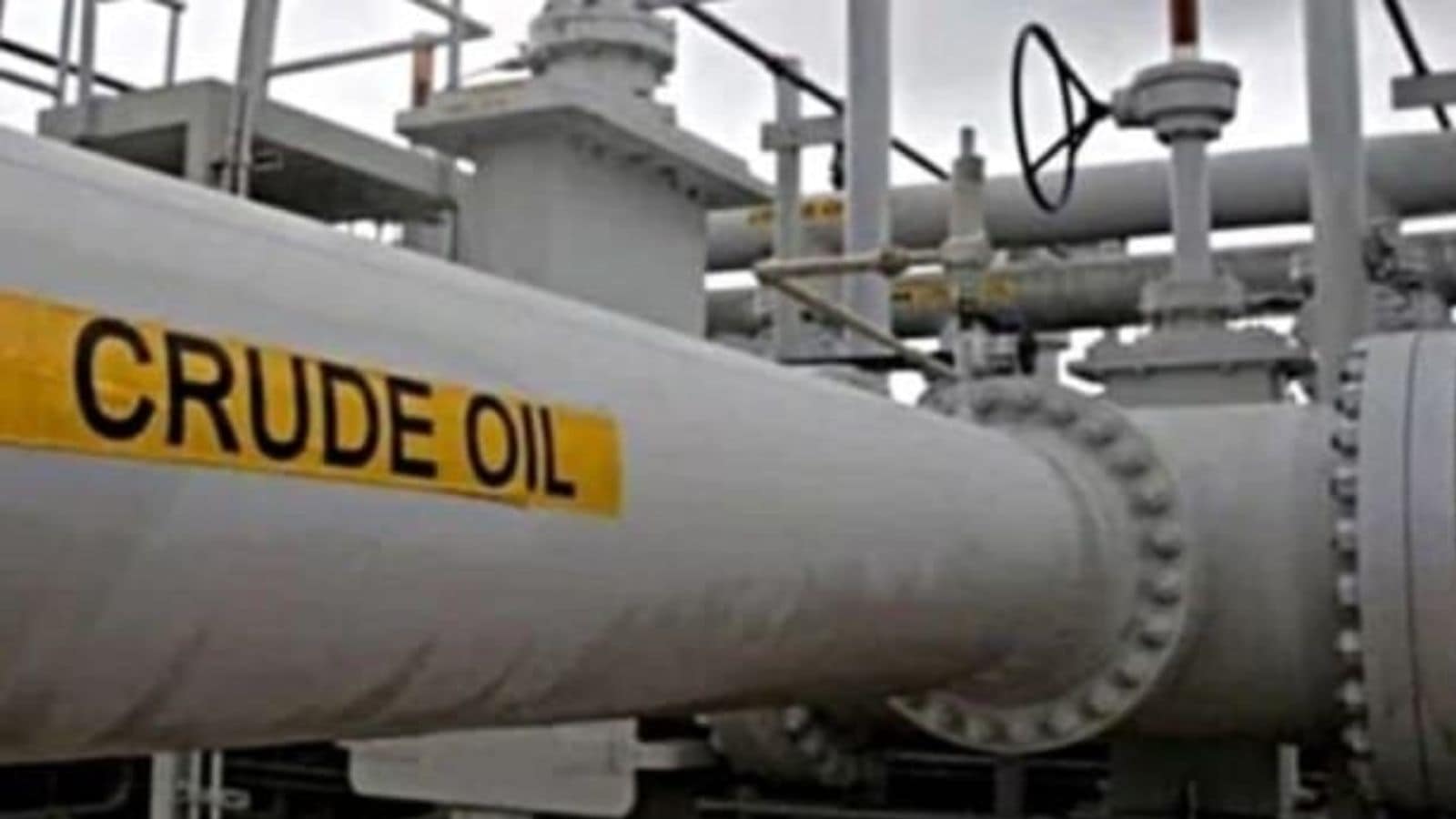India Crude Oil Import Update: Sizable discounts amid subdued international oil prices are helping Russia maintain its dominant market share in India’s oil import basket, notwithstanding the geopolitical complexities and limited Western sanctions on Russian crude.
India’s oil imports from Russia touched a 10-month high in May as the combination of low international oil prices and sustained discounts on Russian oil ensured adequate availability of non-sanctioned tankers to move Russian oil without violating Western sanctions.
Greater availability of non-sanctioned oil tankers is evidently offsetting the constraints that came with the US sanctioning numerous tankers of Russia’s shadow fleet in January for sanction violations, per trade sources.
India’s Russian oil imports so far this month have risen 1.6 per cent over April to 1.97 million barrels per day (bpd), per provisional vessel tracking data from commodity market analytics firm Kpler. The share of Russian crude in India’s oil import basket is nearly 39 per cent in May. At 5.11 million bpd, India’s overall oil imports for the month have been higher by 5.2 per cent sequentially. Data for the full month is expected to stay at these levels, barring a few insignificant fluctuations.
The average price of Russia’s flagship crude grade Urals—also the mainstay of India’s Russian oil imports—was around $50 per barrel excluding shipping and insurance costs in May, which is $10 per barrel lower than the Western price cap of $60 per barrel for Russian oil. This was due to a combination of the current low oil price environment and discounts offered by Russian oil suppliers and traders.
Consequently, tanker and insurance availability has not been a major concern as the price cap mechanism enforced by G7 countries allows Western shippers and insurers to participate in Russian oil trade if the oil is priced below the cap. According to Sumit Ritolia, Lead Research Analyst, Refining & Modeling at Kpler, at least 20 tankers previously used to exclusively haul non-sanctioned crude entered the market to transport Urals cargoes in May. Urals crude accounts for around three-fourths of India’s Russian oil imports.
“Russian volumes remain elevated despite external pressures, reinforcing the primacy of economic pragmatism in India’s energy policy…Indian refiners often respond to opportunistic buying behaviour. As per trends, India has capitalised on discounts, particularly from sanctioned or price-sensitive suppliers like Russia…May’s uptick in volumes indicates competitive pricing by suppliers versus benchmarks like Brent,” Ritolia said.
Story continues below this ad
Urals continues to trade at a discount to rival grades from India’s traditional suppliers in West Asia. To be sure, the discounts have shrunk over time, but they still remain worthwhile for India’s refiners as the country depends on imports to meet over 85 per cent of its crude oil needs.
Even as sanctions persist, their enforcement remains porous, enabling Indian refiners to maintain steady access to Russian crude. Industry sources expect Indian refiners and Russian oil suppliers and traders to continue navigating the sanctions successfully without taking any major risk in the near to medium term. Indian refiners have publicly stated that they are ready and willing to buy Russian oil if the transactions, suppliers, traders, shippers, and insurers involved are not under sanctions.
Going by Kpler’s estimates, Russia’s share in India’s oil import mix is likely to stay elevated in the 30–35 per cent range over the coming months, especially if price economics stay favourable and Western sanctions stay limited in their scope and enforcement. Russian oil flows to India could temper a bit in the coming months as Russia’s domestic refinery throughput is likely to increase, which may limit the volumes available for exports.
Besides Russian volumes, India increased oil imports from the Middle East—mainly Iraq and the United Arab Emirates (UAE)—and the US in May, “indicating strategic diversification to balance geopolitical risk while fulfilling economic imperatives”, Ritolia said, adding that India’s crude import profile for May 2025 highlights its price-sensitive and diversified sourcing strategy.
Story continues below this ad
India’s oil imports from its second-largest source of crude—Iraq—stand at 1.18 million bpd so far in May, accounting for 23 per cent of India’s total oil imports during the month. Saudi Arabia retained its position as India’s third-largest source of crude by supplying 0.57 million bpd, resulting in a market share of around 11 per cent. The UAE and the US were next in the suppliers’ pecking order with a market share of 9.2 per cent and 5.6 per cent, respectively.
Iraq and Saudi Arabia were India’s top two suppliers of crude oil prior to the war in Ukraine. But as Western buyers started shunning Russia’s oil in the wake of its February 2022 invasion of Ukraine, India and China emerged as the top destinations for Russian crude.
“By diversifying its crude supply across Russia, the Gulf states, and the US, India maintains a diplomatic hedge. This multi-aligned strategy enhances India’s energy security and strengthens its bargaining power in a multipolar global oil market,” Ritolia said.


